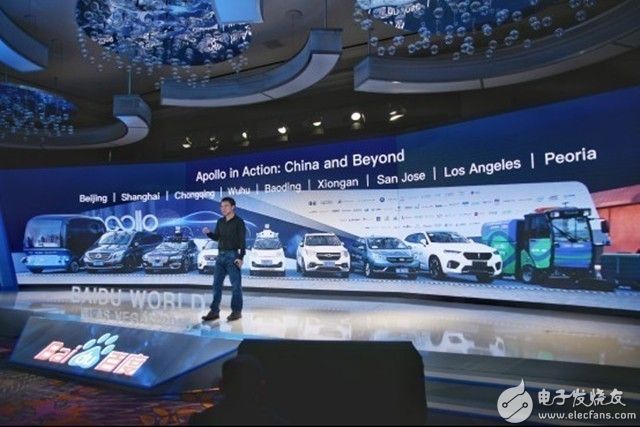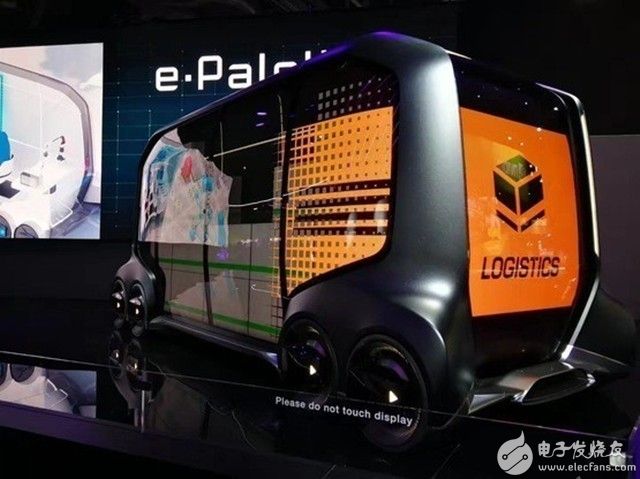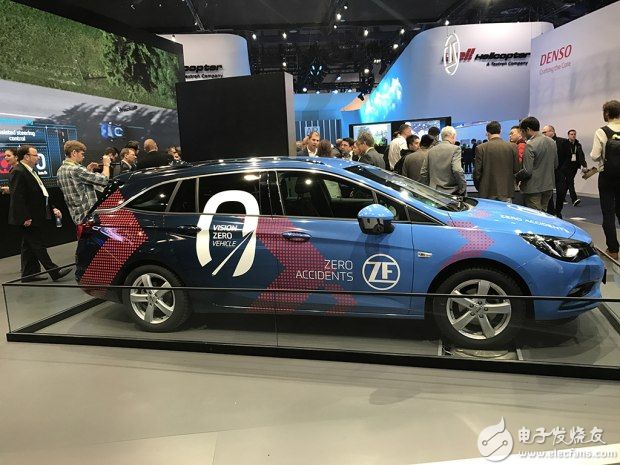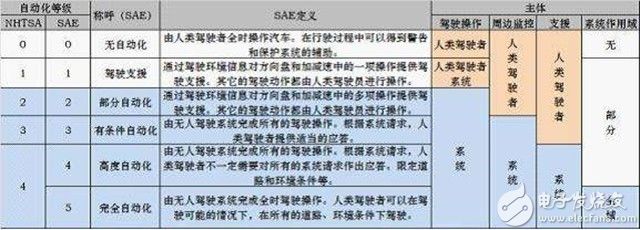The 2018CES exhibition is still lively. In addition to traditional technology manufacturers, in recent years, car manufacturers and car-related technologies and products have also become the highlight of the show. Especially the first "automatic driving technology". Let's take a look at the latest developments in the autopilot field at this year's CES show : ◠Baidu officially launched Apollo 2.0 version: and open to users Baidu announced before the CES show that it officially launched Apollo2.0 and officially opened to users. Baidu Apollo 2.0 is a complete autonomous driving Solution that enables automatic driving on simple urban roads. It marks the four modules of the Apollo platform including cloud services, software platforms, reference hardware platforms and reference vehicle platforms. . ◠NVIDIA released: AI chip DRIVEXavier for unmanned vehicles NVIDIA Huang Renxun officially released DRIVEXavier at CES, which is reported to be an AI supercomputing chip specially prepared for unmanned vehicles. In the same period, NVIDIA introduced two software platforms based on DRIVEXavier design: DRIVEIX and DRIVEAR. DRIVEIX is an intelligent experience software development kit that provides AI assistive functions for drivers and passengers with sensors inside and outside the body. At the same time, the DriveAR software, which is an in-car AR platform. Huang Renxun said that "the future car will be software-defined." ◠Samsung released: vehicle platform DRVLINE and 5G automotive solutions (TCU) Samsung officially released its latest in-vehicle platform DRVLINE on the CES2018, as well as the industry's first 5G automotive solution (TCU for remote information control unit). It is reported that Samsung/Harman's 5G solution will enable cars to interact directly with traffic lights, external traffic management systems and other vehicles. In other words, the TCU will serve as the connection point between the individual car and the larger transportation network. ◠Bosch: propose new interconnected transportation solutions and solutions In addition to a variety of solutions for smart cars, driverless and transportation services, CES Bosch has brought a new set of interconnected transportation solutions and solutions: 1. Community parking; 2. Automatic Generation parking system; 3. Automated emergency call system eCall; 4. Shared transportation service; 5. Integrated vehicle interconnection platform. Bosch integrates a wide range of automotive services currently available, including wrong road warnings, preventive diagnostics, stolen vehicle tracking, and in-vehicle remote smart home controls to turn the car into an interconnected living space. ◠Toyota: Released E-Palette, an e-commerce platform based on urban automatic driving Toyota CES launched the E-Palette, a business application that meets the needs of users and provides urban autonomous driving solutions. Toyota said that the E-Palette includes Toyota's Guardian technology to provide a secure and reliable car network, an open and flexible platform that can be easily adapted to many applications, including driving sharing, express delivery, and Retail. ◠Ford: Auto-driving take-away to open the auto-driving business model Ford announced that it will begin a joint test with a US logistics company Postmates on self-driving car transport in a city in 2018. Ford believes that working with these partners can help Ford validate the business model of autonomous driving. Ford Global Marketing Vice President Jim Farley said that Ford will launch more urban cooperation in 2018. ◠ZF: Showcase ProAI prototype ZF exhibited a prototype of a ZF ProAI central controller with a variety of sensors and support for artificial intelligence. It can be applied to the system architecture of any vehicle with modular design, and the available hardware and required autopilot can be adjusted according to the actual application. It is now possible to achieve the highest L4 level of autonomous driving, and also integrates CareWallet. Mobile payment function for car e-wallet. As of 2017, 12 of the world's top 14 technology companies have announced the development of autonomous driving-related technologies; in the automotive sector, 13 of the world's top 14 automakers have announced their intention to enter the autonomous driving arena. It can be said that the era of automatic driving has arrived. Is the era of automatic driving really coming? Actually far from us From the point of view of the exhibition back, from the number of manufacturers who have invested in autonomous driving, and the enthusiasm of IT big coffee for autonomous driving, the era of automatic driving has come. But this is just a literal and laboratory state. If you follow the classification of autonomous driving, the automatic driving seen at the show is only the L3 level. In reality, the automatic driving that our general public can reach is mostly L2. For example, some models of Volvo are equipped with adaptive cruise + lane keeping + CitySafety. In addition, from the CES, the products released by the manufacturers are also good, and the solutions are also concentrated in the field of ADAS systems, namely "Advanced Driver Systems". That is to use the various sensors installed in the car to collect the environmental data in the car at the first time, and perform technical processing such as identification and detection of static and dynamic objects, so that the driver can be the fastest. Time to detect the dangers that may occur. In ADAS, the core of the hardware is the sensor (camera, radar, etc.) and the processor, and the software core is the algorithm. Among them, NVIDIA's computing chip DRIVEXavier is the representative of the driverless chip field, and Baidu's Apollo platform is one of the representatives of the automatic driving domain algorithms and solutions. Why are automakers and tech giants such as Google calling for self-driving for so many years, and now, it’s still not much progress? This is mainly due to the following reasons: First, the ADAS system used in the early stages of autonomous driving is too expensive. The cost of bicycles used by Google's self-driving cars earlier was as high as $70,000. Although the cost has now dropped to $7,500, it is still too expensive, which greatly restricts the popularity of the ADAS system. Second, there are big barriers between traditional automakers and technology vendors. When Baidu and Google released their own driving technology, they have seen many traditional car manufacturers still stand on the surface. On the surface, they are peaceful, but in private, you fight for it. This is very simple, traditional car manufacturers are actually not willing to tech giants to get their own car supply chain system. That is, technology companies enter the supply chain of OEMs. If the technology manufacturers master the standards of autonomous driving or the core technology in the future, then the traditional car manufacturers have become OEMs. So now we see a very interesting phenomenon, such as Audi, although he gave Google platform, Apple platform, but he is also developing self-driving technology. And if you say that the traditional manufacturer map is not working, it is actually wrong. At present, Audi, BMW, Daimler, Bosch and the mainland are the major shareholders of Here map. In addition, in terms of technology accumulation and big data accumulation, the gap between traditional automakers and technology giants is far from what you think. When you are using the GPS that comes with your car, you are contributing data to the manufacturer. For example, the new Audi A8 is equipped with a front-mounted camera lens, which scans the front road section 18 times per second, and receives data simultaneously with the radar and ultrasonic sensors to calculate the surrounding environment. Autopilot can be achieved at less than 60 km, or during road congestion. Compared with technology manufacturers, traditional car manufacturers have an advantage in industrial system integration. This can be compared to Tesla's electric car. For example, Toyota electric vehicles are better in terms of reliability, production process and assembly process. The last point to be said is also the most important point. Self-driving from smart traffic is not true self-driving. This understanding is very simple, now car manufacturers, as well as technology giants, they are concerned about the autonomous driving technology, and did not pay attention to the "traffic" itself, that is, the main body of participation in traffic is people, not systems. Google is always saying that our self-driving cars have accumulated millions of kilometers of data, etc., but this is not used. For example: Las Vegas's self-driving minibus and an truck accident. At that time, the minibus detected the truck based on the sensor. It could have stopped to avoid hitting the truck. However, according to the rules, the truck had to give way. As a result, the truck came out, so an accident occurred. The point of this point is that the data collected by the manufacturer is to see the law from it, but now in life, in addition to traffic regulations, we still have a lot of traffic habits and unspoken rules that are not quantified. Similarly, the data collected by autonomous vehicles is simply not worth mentioning compared to the traffic data generated every day in the world. It is said that the current infrastructure is provided for human drivers, not automatic driving systems. So in order to make the whole traffic more predictable. Automated driving must be coordinated with smart transportation, that is, information input will be combined with the environment to provide more information about the road conditions, and finally the communication between the vehicle and the vehicle. Programmable Power Meter,Network Power Analyser,Remote Terminal Unit,Smart Gateway Jiangsu Acrel Electrical Manufacturing Co., LTD. , https://www.acrel.com.pk
Baidu Apollo2.0 (picture from Baidu) 
NVIDIA released DRIVEXavier (picture from baidu) 
Toyota E-Palette (picture from baidu) 
ZF show ProAI prototype car (picture from baidu) 